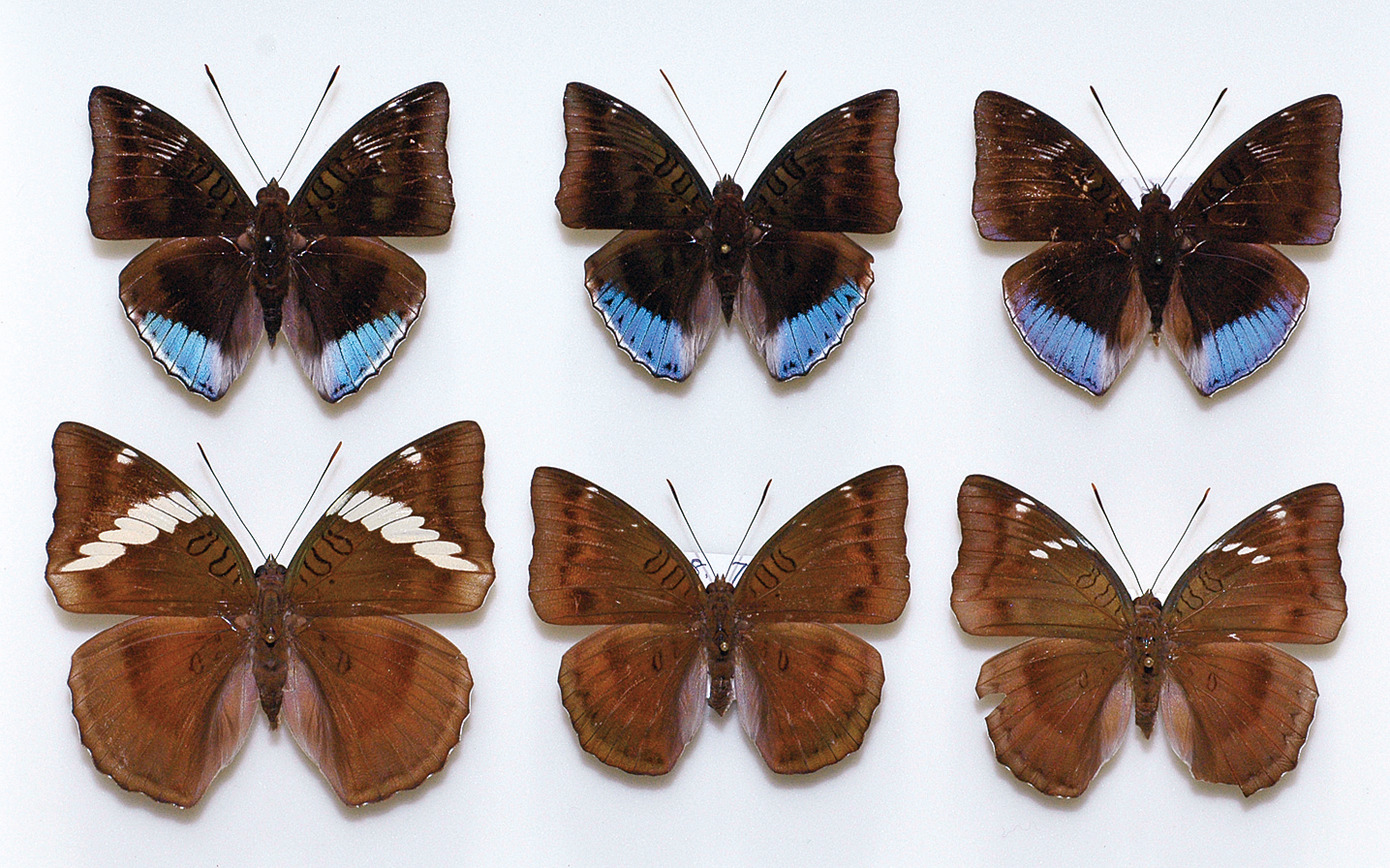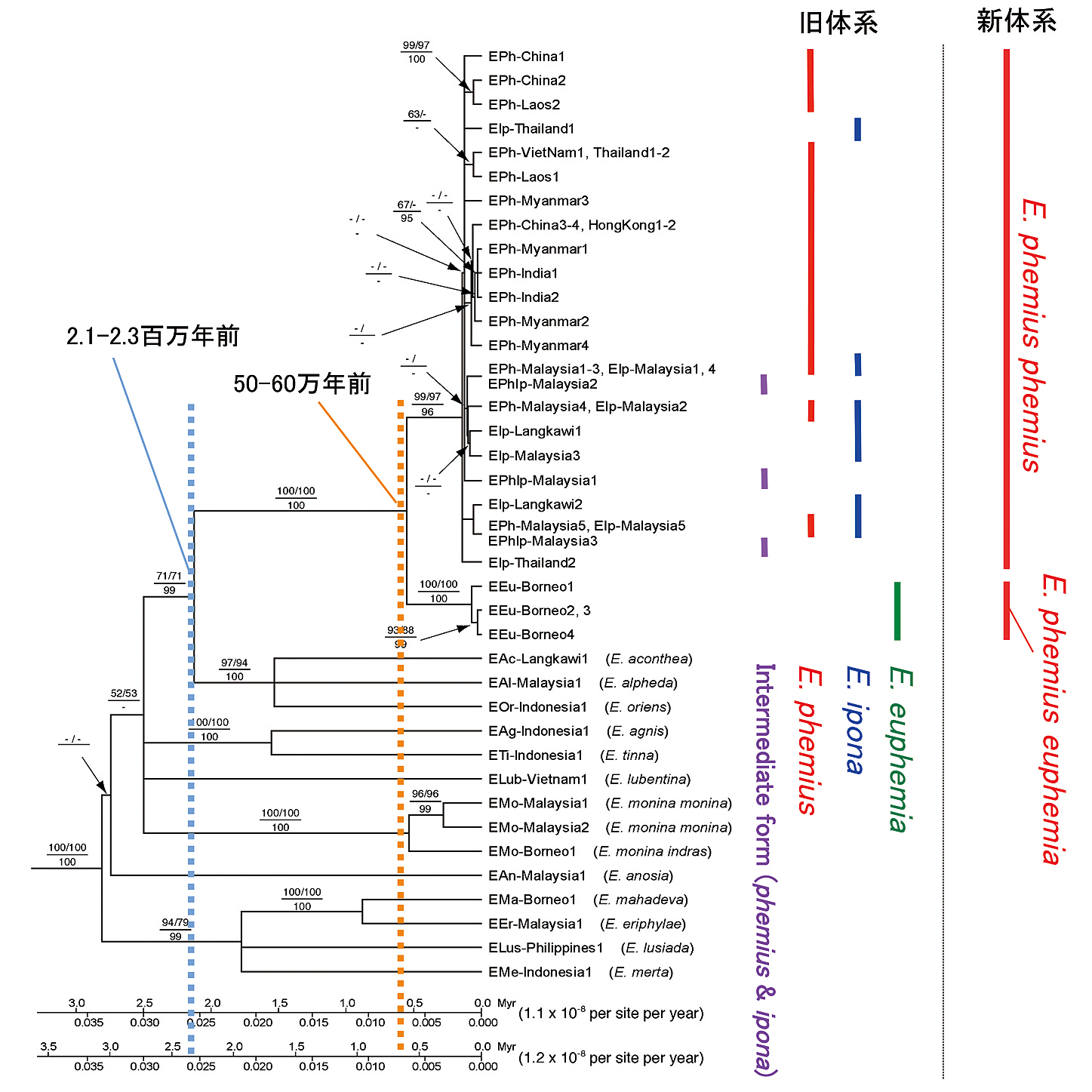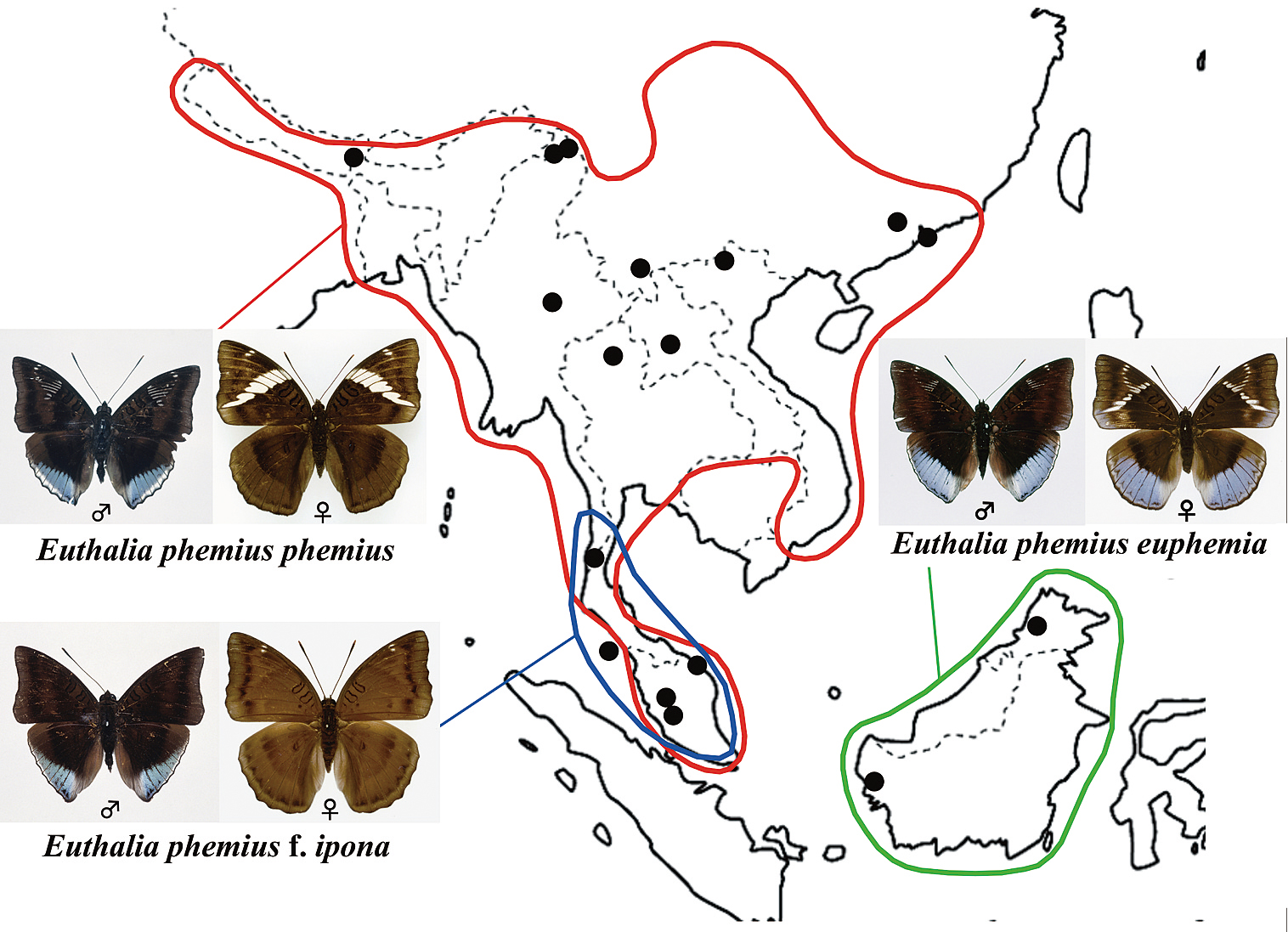B24
Euthalia phemius
prior species classification due to deceptive wing markings
The Euthalia phemius complex, which is composed of three SE Asian nymphalid species, Euthalia phemius, E. ipona and E. euphemia, were genetically analyzed by examining mitochondrial and nuclear genes. The three species were also examined morphologically, with particular emphasis on wing markings and male genitalia. As a result, no significant differences among the three species were detected with respect to either genetic distance or genital morphology. Yago et al. (2012) therefore concluded that the three currently recognized Euthalia species belong to a single species. Accordingly E. ipona is synonymized with E. phemius, while E. euphemia is treated as a subspecies of E. phemius. Moreover, divergence times in the E. phemius complex were also analyzed from the DNA sequences. Judging from the linearized tree, the common ancestor of the E. phemius complex appeared about 2.1-2.3 Mya. The divergence age of the ancestral E. phemius phemius and the ancestral E. phemius euphemia was estimated at about 0.5-0.6 Mya. It was inferred that E. phemius was divided into two populations by the formation of the Strait of Malacca between Borneo and the Malay Peninsula, extending from Indochina, perhaps due to a climatic or geographic change. Subsequently, it is considered that the two evolved into the extant E. phemius phemius and E. phemius euphemia, respectively. (Masaya Yago)
References
塚田悦造(編)(1991)『図鑑 東南アジア島嶼の蝶 第5巻 タテハチョウ編(下)』プラパック(松本)。
Yago, M. et al. (2012) Revision of the Euthalia phemius complex (Lepidoptera: Nymphalidae) based on morphology and molecular analyses. Zoological Journal of the Linnean Society 164: 304–327.



